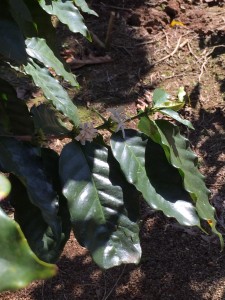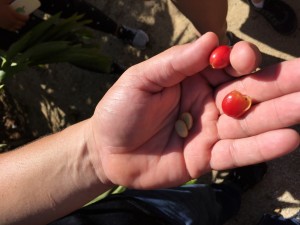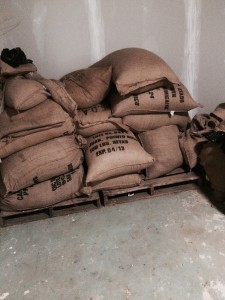Global climate change is uniquely affecting all places around the world. Living in Illinois, I can conceptualize the causes of climate change and read about the s evere weather events occurring around the world, and I can detect that the seasonal variations are not quite the same, but I cannot truly understand the gravity of the effects of climate change until I hear about them first hand from those experiencing them and suffering their consequences.
evere weather events occurring around the world, and I can detect that the seasonal variations are not quite the same, but I cannot truly understand the gravity of the effects of climate change until I hear about them first hand from those experiencing them and suffering their consequences.
Visiting Puerto Rico, I had that eye-opening experience. At the small family owned coffee farm in Puerto Rico, Café Gran Batey, the owner’s son reflected on climate change causing significant reductions in coffee yields with the this year and last year their lowest coffee yields on record. Yield has drastically decreased because of changes in a climatic pattern essential for coffee growing.
Puerto Rico has a dry season and a wet season. In the early months of the year, the dry weather allows for the coffee plant flowers to open and be pollinated. Then, in the later months of the year, the wet weather is essential for the coffee bean to grow and hold in moisture. However, climate change has flip flopped the seasons. More rain at the beginning of the year is knocking off the flowers and not allowing them to open for pollination. Less rain at the end of the year is producing coffee beans with dry centers.
The truth of the owner’s son concern about climate change became even more evident in the storage room where there were few bags filled with coffee beans compared to the amount of space available. Making the connection between the weather causes and the almost empty storage room, I reflected further on society’s dependence on agriculture for goods, and the potential extent of economic  and food availability consequences for producers and consumers.
and food availability consequences for producers and consumers.
The severity of climate change and its effects on agriculture, however, did not discourage me. Instead it reaffirmed for me that solving global issues in agriculture would require developing dynamic regional solutions for regional climatic and agricultural variations.
Before coming to Puerto Rico, I was curious to find out the status of conservation, including their methods of conservation and how much land is protected. At El Yunque National Forest, I was happy to find that their educational materials discussed the interdependency of different species in an ecosystem and of people on ecosystems. Then, at Hacienda Buena Vista, I was impressed by their mission to preserve biodiversity and historical sites and their ideal of susta inable agriculture as well as their focus on education.
inable agriculture as well as their focus on education.
All of my questions about Puerto Rico’s status on conservation and sustainability have yet to be answered. I want to find more quantitative data about energy, recycling, and biodiversity that my observations cannot provide. My observations still have allowed me to reflect on global sustainability, especially when comparing Illinois with Puerto Rico. From my experience in Illinois, I know that it is still developing in many areas of sustainability, and much work as well as research needs to be done to both implement and improve programs. Puerto Rico is in the process of development too. Puerto Rico has showed me further that all places around the world are at different stages of achieving sustainability and that achieving sustainability will require collaborative effort from all fields on a local level.
With a few more days left in PR, I am anxious to ask more questions and experience more of the island. I am especially excited to ask students at the University of Puerto Rico-Mayaguez about their perspectives on sustainability, and, having enjoyed PR so much myself, I am curious to know what they especially like about the island.

